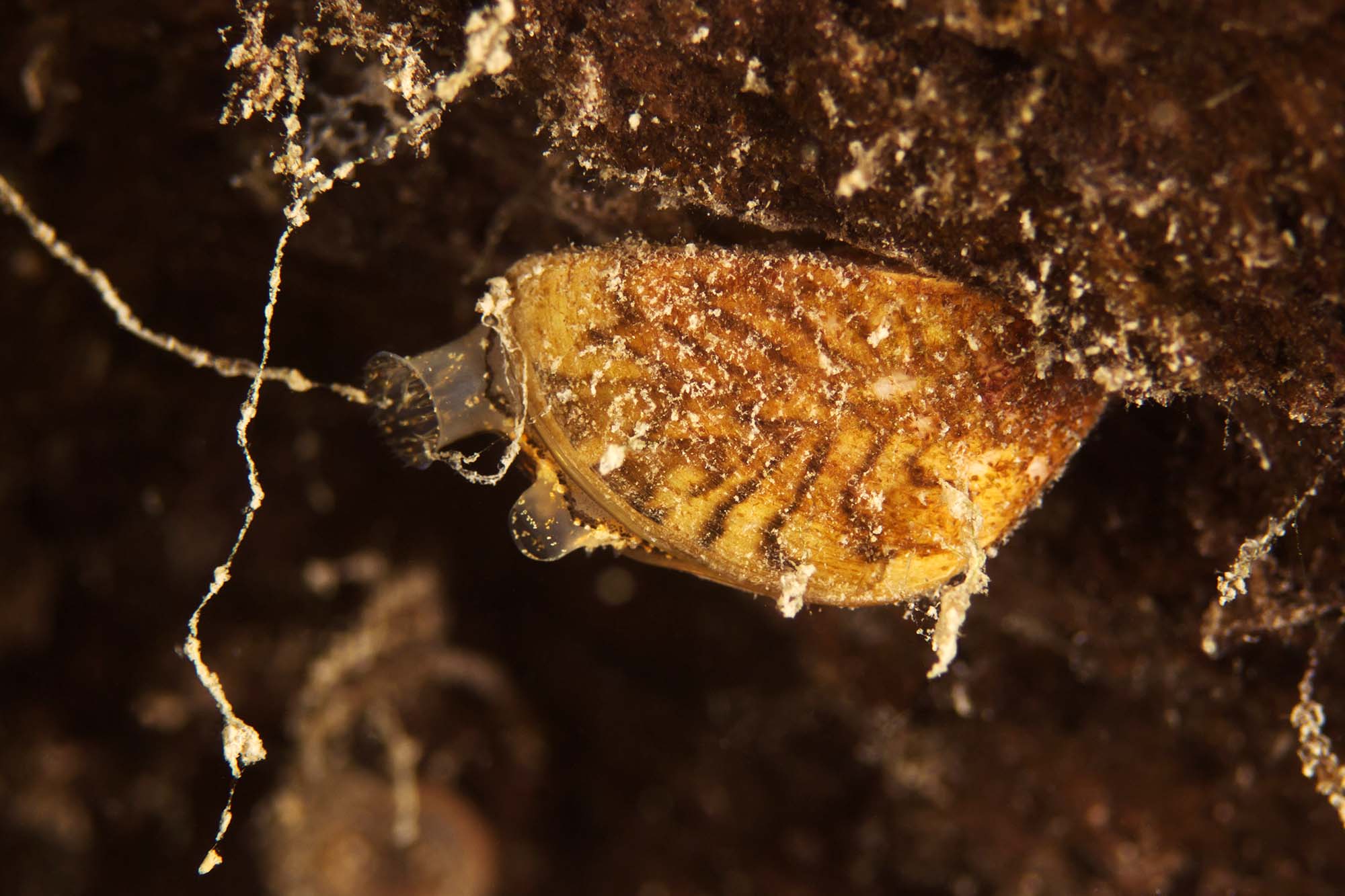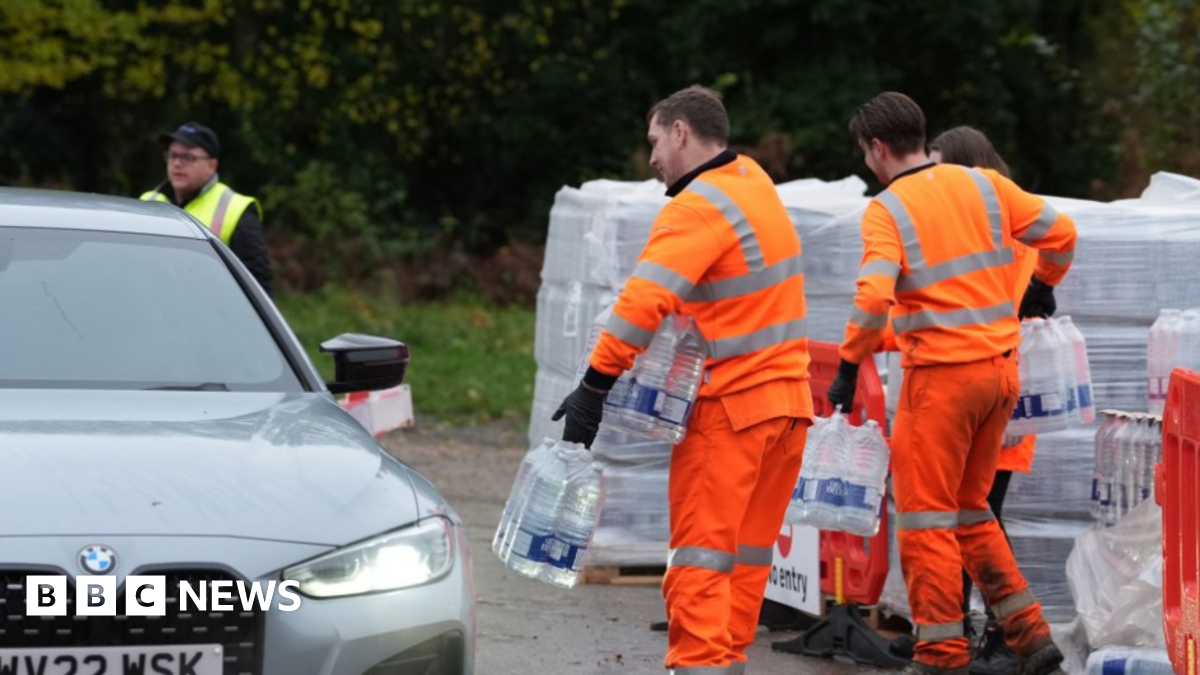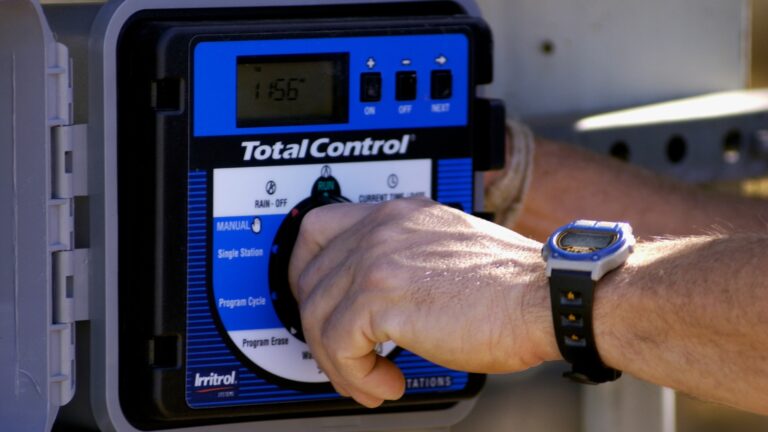Zebra mussels threaten infrastructure and native ecosystems. Colorado ramps up efforts to contain them – KUNC

Report on Zebra Mussel Infestation in Colorado and Alignment with Sustainable Development Goals
1.0 Introduction
An invasive bivalve species, the zebra mussel (Dreissena polymorpha), has established reproducing populations in several Colorado water bodies since its initial detection in 2022. This report outlines the ecological and infrastructural threats posed by this infestation, details the current monitoring and mitigation efforts by Colorado Parks and Wildlife (CPW) and its partners, and analyzes the situation through the framework of the United Nations Sustainable Development Goals (SDGs).
2.0 Threat Analysis: Ecological and Infrastructural Impacts
The proliferation of zebra mussels presents a multi-faceted threat to Colorado’s natural and engineered systems. The species’ biological characteristics contribute to its significant disruptive potential.
2.1 Biological Characteristics
- High Reproductive Rate: A single female zebra mussel can produce up to one million offspring annually, leading to rapid population establishment.
- Tenacious Adhesion: Mussels attach to hard surfaces using durable byssal threads, which form a strong physical and chemical bond that persists even after the organism’s death.
- Filter-Feeding Behavior: As prolific filter feeders, they remove essential nutrients from the water column, altering the aquatic food web.
2.2 Impact on Ecosystems and Infrastructure
- Ecological Damage: By consuming vast quantities of plankton, zebra mussels disrupt the foundational food source for native fish and other aquatic species.
- Infrastructure Damage: Mussels colonize the interior of pipes, dams, and hydroelectric infrastructure, causing blockages that impair function and require costly removal. This poses a direct threat to water delivery and power generation systems.
3.0 Alignment with Sustainable Development Goals (SDGs)
The zebra mussel infestation directly challenges the achievement of several key Sustainable Development Goals in the state of Colorado.
3.1 SDG 6: Clean Water and Sanitation
The mussels’ ability to clog water intake pipes and treatment facility infrastructure directly threatens the reliable management of water resources and sanitation services for communities.
3.2 SDG 14: Life Below Water & SDG 15: Life on Land
The invasion represents a significant threat to freshwater biodiversity.
- By outcompeting native species for food and altering habitats, zebra mussels degrade the health of aquatic ecosystems, undermining efforts to conserve and sustainably use inland water ecosystems (Target 15.1) and conserve life below water.
- This directly conflicts with SDG Target 15.8, which calls for measures to prevent the introduction and reduce the impact of invasive alien species on land and water ecosystems.
3.3 SDG 8: Decent Work and Economic Growth
The economic consequences of unchecked infestation are substantial. Millions of dollars in damages to water and power infrastructure have been recorded in other regions, such as the Great Lakes. These costs represent a significant economic liability and threaten industries reliant on water resources, including recreation and agriculture.
3.4 SDG 17: Partnerships for the Goals
The response to the infestation exemplifies the importance of multi-stakeholder collaboration. State agencies (CPW), federal bodies (Bureau of Reclamation, U.S. Geological Survey), and the public are working in partnership to monitor, manage, and mitigate the spread of the species.
4.0 Current Status and Response Strategy
CPW has intensified its monitoring and response efforts following the confirmation of established populations.
4.1 Infestation Status
As of this report, five water bodies are officially designated as “infested,” indicating the presence of a reproducing population:
- West and East Lake
- Highline Lake
- Mack Mesa Lake
- A private body of water in Eagle County
- The Colorado River from the 32 Road bridge to the Colorado-Utah state line
Additionally, larval veligers have been detected in the Colorado River downstream of its confluence with the Roaring Fork River.
4.2 Monitoring and Detection Program
CPW has implemented a robust early detection and rapid response program utilizing advanced technologies.
- Conventional Sampling: Plankton tow nets are used to capture microscopic veligers, and substrate samplers are deployed to detect the sandpaper-like texture of juvenile settlers.
- Advanced Technology: In collaboration with federal partners, CPW is utilizing cutting-edge methods, including environmental DNA (eDNA) testing and autonomous water samplers, to enhance detection probability.
4.3 Public Engagement and Prevention
Recognizing that human activity is the primary vector for spreading zebra mussels, public awareness is a critical component of the control strategy. CPW is urging the public to take the following actions:
- Clean, drain, and dry all watercraft and equipment, including fishing waders and waterfowl hunting gear.
- Utilize gear-cleaning stations provided by the state.
- Report any potential sightings of zebra mussels to CPW immediately.
Analysis of Sustainable Development Goals in the Article
1. Which SDGs are addressed or connected to the issues highlighted in the article?
-
SDG 6: Clean Water and Sanitation
The article connects to this goal by highlighting the threat zebra mussels pose to water infrastructure. The text mentions concerns about the mussels “attaching inside of our pipes or hydroelectric infrastructure-dams,” which directly impacts the management and delivery of clean water and sanitation services.
-
SDG 14: Life Below Water
This goal is central to the article, which focuses on the impact of an invasive species on freshwater ecosystems. Zebra mussels are described as having a significant “impact to the environment” because they are “filter feeders… filtering every good nutrient that our native fish need to survive.” This directly addresses the conservation and sustainable use of aquatic ecosystems and their resources.
-
SDG 15: Life on Land
While focused on aquatic life, SDG 15 is highly relevant due to its specific targets concerning invasive species. The entire article is about the detection, monitoring, and management of zebra mussels, an invasive alien species that degrades native aquatic habitats and threatens biodiversity, which is a core component of this goal.
-
SDG 17: Partnerships for the Goals
The article demonstrates the importance of partnerships in addressing complex environmental challenges. It details the collaboration between Colorado Parks and Wildlife (CPW), the federal government, the Bureau of Reclamation, and the U.S. Geological Survey to “develop testing methods” and deploy “a new piece of technology.” It also calls for public participation, emphasizing that “it’s not just professionals… that can make a difference.”
2. What specific targets under those SDGs can be identified based on the article’s content?
-
Under SDG 15: Life on Land
- Target 15.8: By 2020, introduce measures to prevent the introduction and significantly reduce the impact of invasive alien species on land and water ecosystems and control or eradicate the priority species.
The article is a direct case study of this target in action. The efforts by Colorado Parks and Wildlife, including increased sampling, early detection, rapid response, and public awareness campaigns, are all measures aimed at preventing the spread and reducing the impact of the invasive zebra mussel.
- Target 15.5: Take urgent and significant action to reduce the degradation of natural habitats, halt the loss of biodiversity and, by 2020, protect and prevent the extinction of threatened species.
The threat zebra mussels pose to native fish by consuming their food sources is a direct driver of habitat degradation and biodiversity loss. The actions taken by CPW are intended to mitigate this threat and protect native species.
- Target 15.8: By 2020, introduce measures to prevent the introduction and significantly reduce the impact of invasive alien species on land and water ecosystems and control or eradicate the priority species.
-
Under SDG 14: Life Below Water
- Target 14.2: By 2020, sustainably manage and protect marine and coastal ecosystems to avoid significant adverse impacts, including by strengthening their resilience, and take action for their restoration in order to achieve healthy and productive oceans.
Although the article discusses freshwater ecosystems, the principle of this target applies. The infestation of zebra mussels causes “significant adverse impacts” on the aquatic ecosystem of the Colorado River and its reservoirs. The monitoring and control efforts are actions taken to manage and protect these vital water bodies.
- Target 14.2: By 2020, sustainably manage and protect marine and coastal ecosystems to avoid significant adverse impacts, including by strengthening their resilience, and take action for their restoration in order to achieve healthy and productive oceans.
-
Under SDG 6: Clean Water and Sanitation
- Target 6.6: By 2020, protect and restore water-related ecosystems, including mountains, forests, wetlands, rivers, aquifers and lakes.
The zebra mussel infestation is a direct threat to the health of Colorado’s lakes and the Colorado River. The work of CPW to monitor and control the mussels is an effort to protect these water-related ecosystems from further degradation.
- Target 6.6: By 2020, protect and restore water-related ecosystems, including mountains, forests, wetlands, rivers, aquifers and lakes.
-
Under SDG 17: Partnerships for the Goals
- Target 17.17: Encourage and promote effective public, public-private and civil society partnerships, building on the experience and resourcing strategies of partnerships.
The article highlights this by describing the collaboration between state (CPW) and federal (Bureau of Reclamation, USGS) agencies. Furthermore, it explicitly calls for a public partnership by asking people to clean their gear and “report any potential sightings of zebra mussels,” demonstrating a multi-stakeholder approach.
- Target 17.17: Encourage and promote effective public, public-private and civil society partnerships, building on the experience and resourcing strategies of partnerships.
3. Are there any indicators mentioned or implied in the article that can be used to measure progress towards the identified targets?
-
Indicator for Target 15.8 (Invasive Species): The article implies several indicators for measuring action against invasive species.
- Number of infested bodies of water: The article explicitly states there are “five bodies of water in Colorado that are officially considered ‘infested’.” Tracking this number over time would measure the effectiveness of containment efforts.
- Effectiveness of monitoring programs: The confidence expressed by the specialist (“our sampling and monitoring program is effective and the way we’ve designed it is working”) suggests that the rate and speed of detection are key performance indicators.
- Adoption of new detection technologies: The mention of developing “testing methods to detect zebra mussel DNA” and deploying an “autonomous sampler” serves as an indicator of investment and innovation in control measures.
-
Indicator for Target 15.5 (Biodiversity Loss):
- Health and population of native species: The article states that zebra mussels filter nutrients “that our native fish need to survive.” An implied indicator of the mussels’ impact, and the success of control efforts, would be the monitoring of native fish populations and the overall nutrient levels in the water.
-
Indicator for Target 17.17 (Partnerships):
- Level of public engagement: The call for the public to use gear-cleaning stations and report sightings implies that the number of reports from the public and the utilization rate of cleaning stations could be used as indicators of the success of the public partnership.
- Number of inter-agency collaborations: The specific mention of partnerships with the Bureau of Reclamation and USGS on technological development serves as a direct indicator of multi-stakeholder collaboration.
4. Table of SDGs, Targets, and Indicators
| SDGs | Targets | Indicators (Mentioned or Implied in the Article) |
|---|---|---|
| SDG 15: Life on Land |
15.8: Prevent and reduce the impact of invasive alien species on water ecosystems.
15.5: Reduce the degradation of natural habitats and halt the loss of biodiversity. |
– Number of officially “infested” bodies of water. – Implementation and effectiveness of sampling and monitoring programs (e.g., plankton tows, DNA testing). – Monitoring for different life stages (veligers, adults) to confirm reproducing populations. – Health and population size of native fish species affected by nutrient depletion. |
| SDG 14: Life Below Water | 14.2: Sustainably manage and protect freshwater ecosystems to avoid significant adverse impacts. |
– Monitoring of water quality and nutrient levels. – Assessment of damage to aquatic habitats (e.g., mussels attached to surfaces). |
| SDG 6: Clean Water and Sanitation | 6.6: Protect and restore water-related ecosystems. |
– Reports of damage to water infrastructure (pipes, dams). – Geographic extent of the zebra mussel spread within the Colorado River basin. |
| SDG 17: Partnerships for the Goals | 17.17: Encourage and promote effective public and multi-stakeholder partnerships. |
– Number of formal collaborations between state (CPW) and federal (Bureau of Reclamation, USGS) agencies. – Number of public reports of potential sightings. – Public use of gear-cleaning stations. |
Source: kunc.org

What is Your Reaction?
 Like
0
Like
0
 Dislike
0
Dislike
0
 Love
0
Love
0
 Funny
0
Funny
0
 Angry
0
Angry
0
 Sad
0
Sad
0
 Wow
0
Wow
0



















































.jpg.webp?itok=0ZsAnae9#)
















.jpg?#)







